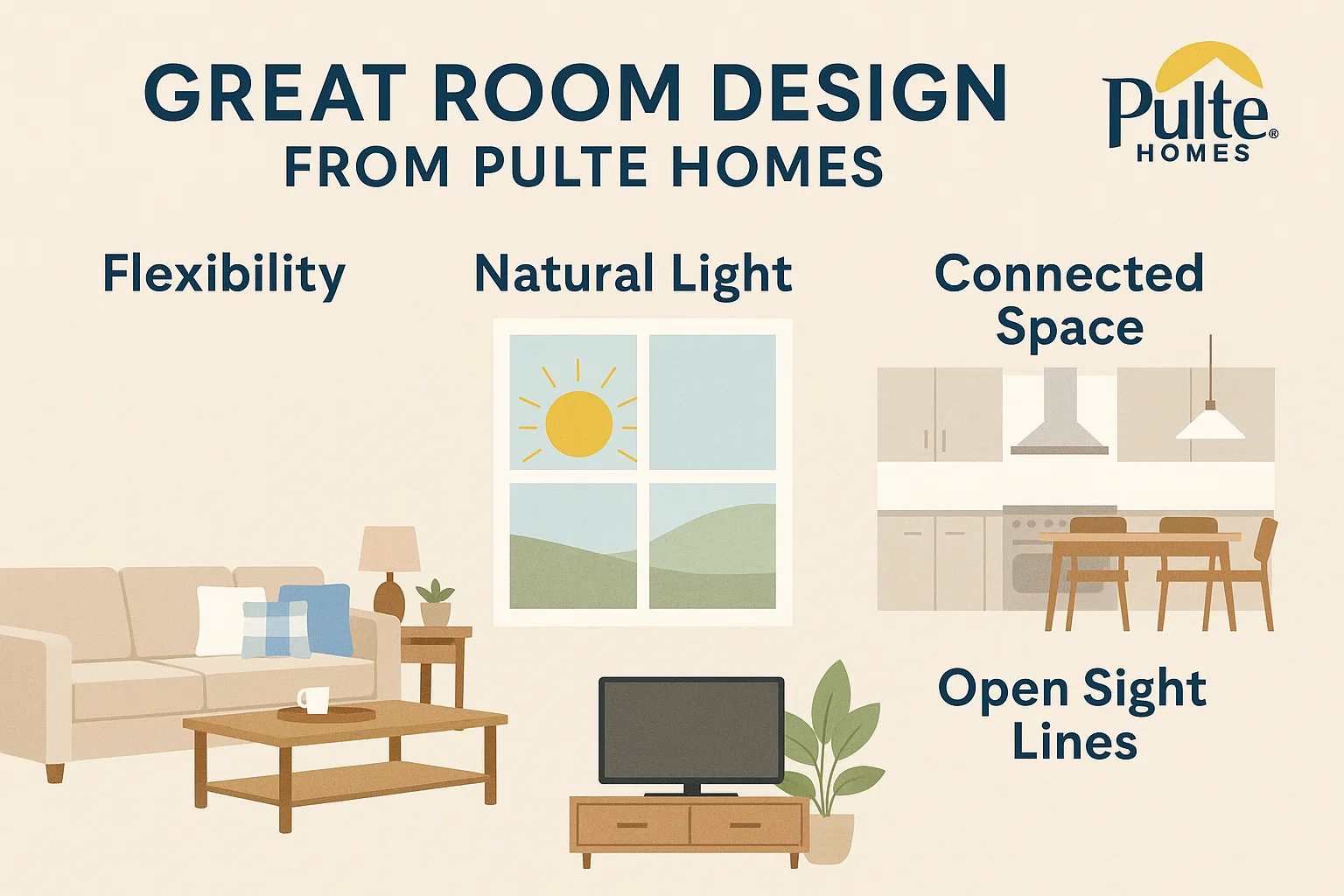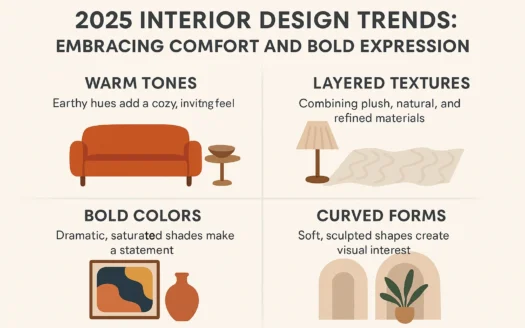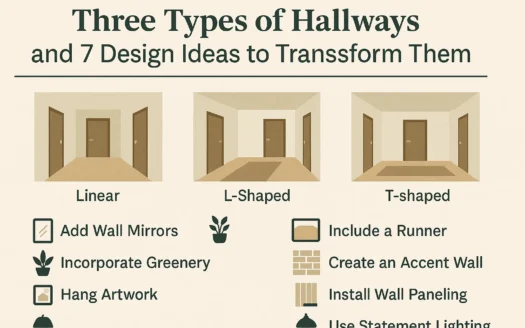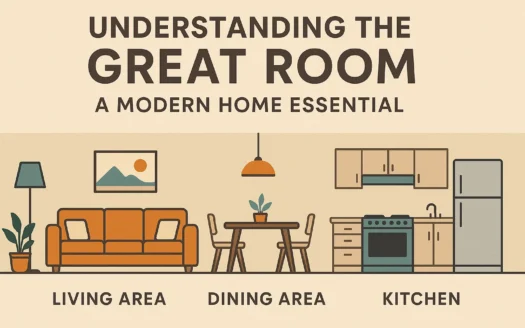Great Room Design from Pulte Homes
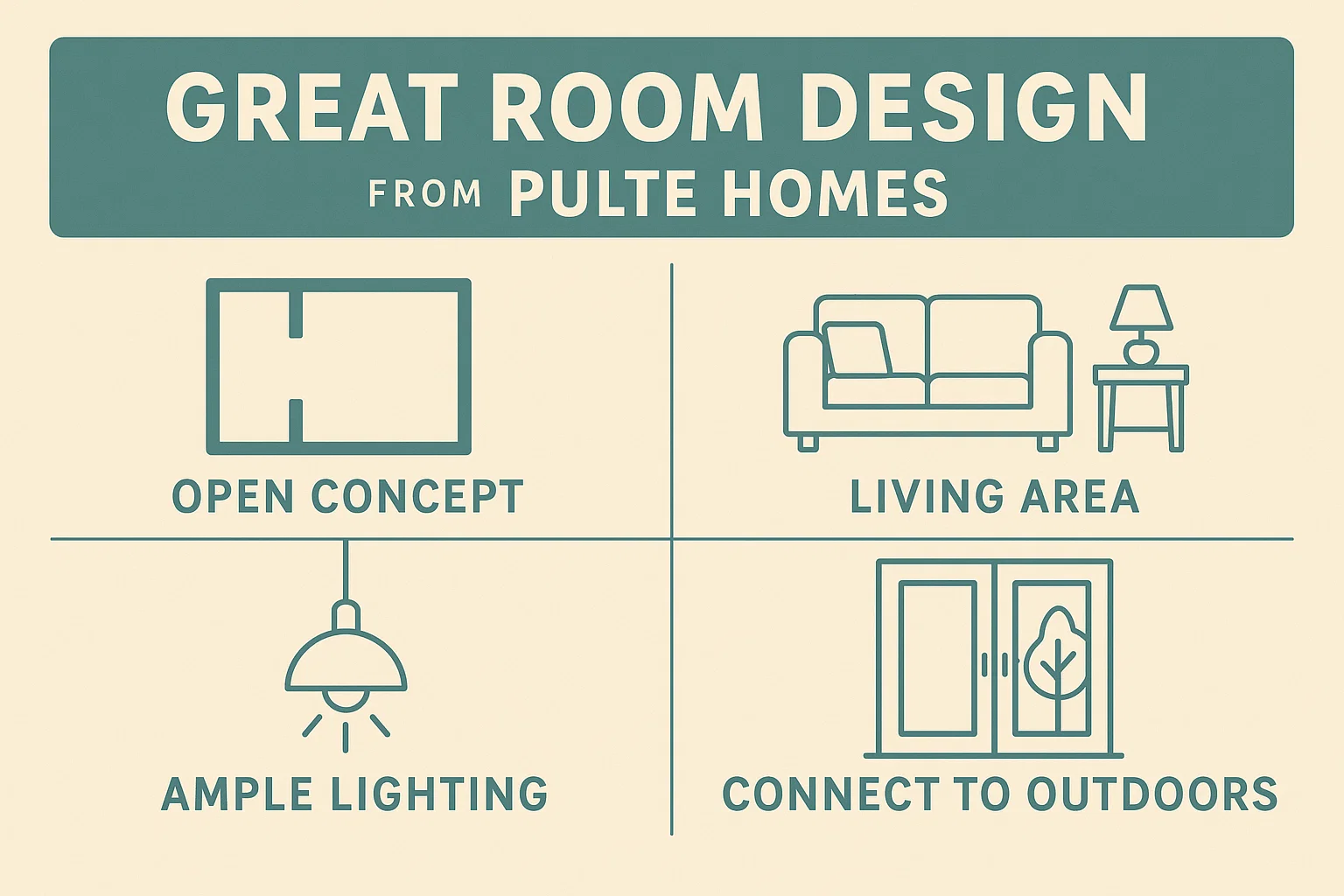
Great Room Design from Pulte Homes
When you get to make design choices for a whole house, it can be fun to try out something new in every room. While it might be a bit jarring if you mix too many patterns and colors, design experts say you can achieve a coordinated but not too matchy-matchy style by repeating a few elements throughout your home.
Playing with Patterns
“A fundamental principle of design is rhythm,” says Leigh Spicher, director of design studios for Ashton Woods. “Just like in music, when a drumbeat repeats, you need some repetition and rhythm throughout your home.” For example, installing hardwood or tile flooring in a linear pattern can be complemented by repeating that pattern in ceiling beams to unify the space.
Image courtesy of Pulte Homes
“The focus for design is to develop a curated look with a mix of styles,” says Angela Nuessle, national director of interior design for Pulte Group. “You don’t want to match everything, but you do need some connection between the rooms, such as a clear style direction or similar colors.”
One way to link spaces like kitchens and bathrooms is to repeat a tile pattern in different sizes or layouts. Lee Crowder, design gallery and model branding manager for Taylor Morrison, suggests using tiles in chevron or hexagon patterns across rooms. “Most tile vendors offer the same tile in multiple sizes, so you can create continuity without monotony,” Crowder explains.
Color Coordination
Image courtesy of Pulte Homes
Selecting a cohesive paint palette is key. Crowder recommends starting with a neutral base for high-traffic areas and choosing four complementary accent colors. “A dark taupe accent wall in your living area, repeated in a bedroom, creates harmony without overwhelming the space,” says Nuessle.
For smaller homes (under 1,500 square feet), consistent flooring throughout enhances cohesion. In larger homes, designers suggest matching floors in main living areas while adding personality to secondary spaces like powder rooms. “Your master bathroom floor should feel special, but secondary bathrooms and bedrooms benefit from uniformity,” notes Crowder.
Fabric and Finishes
Image courtesy of Ashton Woods
Texture plays a vital role in tying rooms together. Nuessle recommends repeating fabrics across elements like drapes and upholstery. “The same fabric on curtains in one room and a sofa in another creates subtle continuity,” she says. Spicher adds that exterior design elements, like shutters or blinds, should mirror interior lines for visual rhythm.
Mixed Yet Coordinated Fixtures
Image courtesy of Pulte Homes
Lighting and hardware offer opportunities for creative coordination. Crowder advises mixing fixtures with similar styles or finishes. “Cabinet pulls can match, while faucets or lighting take on a different finish,” he says. Nuessle highlights the trend of mixed metals but cautions, “Stick to two finishes per room to avoid a cluttered look.”
Whether your style leans contemporary, transitional, or traditional, repeating patterns and finishes ensures a curated yet connected home. “Squared edges on door knobs, lighting, and fixtures create rhythm, while varied finishes add depth,” Spicher explains.
By balancing repetition with creativity, your home can reflect your personality while maintaining a harmonious flow.
